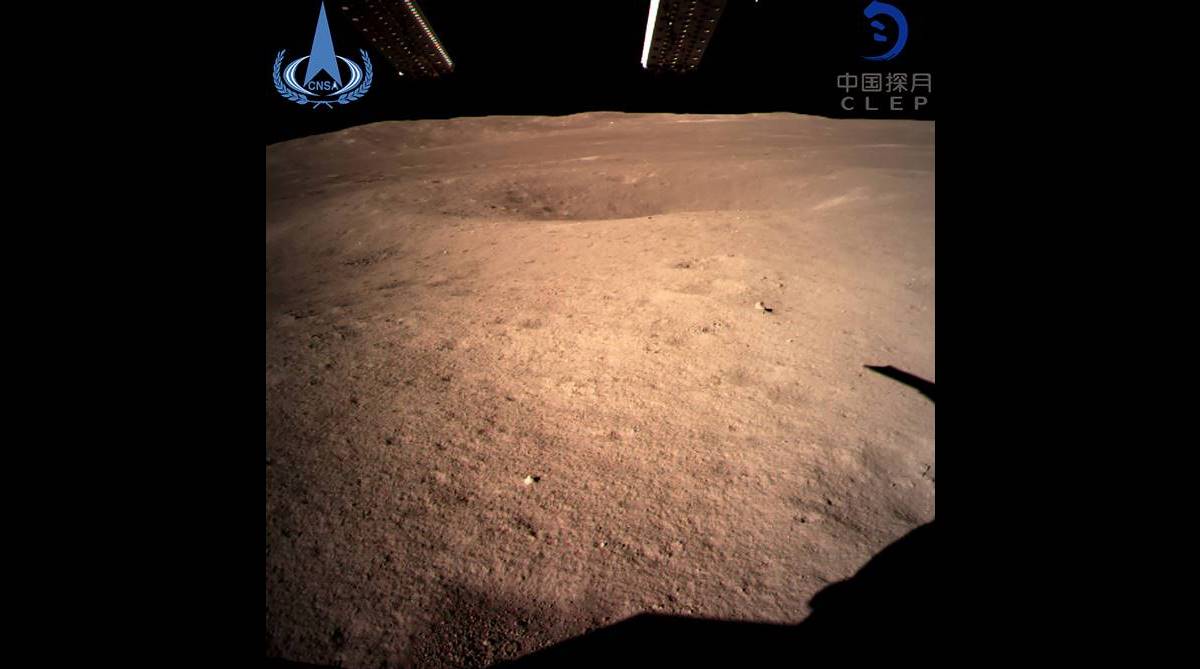NASA mission touches down on Moon aboard Firefly Aerospace lander
The data captured could also benefit humans on Earth by providing insights into how space weather and other cosmic forces impact Earth.
With Thursday’s milestone in space exploration, humanity has landed on what they call the “far side of the Moon”, hitherto a wholly mysterious segment.

This handout picture taken by the Chang'e-4 probe and released by China National Space Administration on January 3, 2019 shows an image of the "dark side" of the moon. (Photo: AFP)
The achievement is stupendous and it would be a gross understatement to suggest that the world is over the moon. China has scripted history on an event that had seemed virtually impossible to achieve barely 24 hours ago. With Thursday’s milestone in space exploration, humanity has landed on what they call the “far side of the Moon”, hitherto a wholly mysterious segment. It has been a different world altogether, one that has always been at a tangent to the world as we know it, indeed a lunar zone from which signals cannot be emitted directly. The mystery has eventually been explored by a rover ~ called Chang’e-4 probe ~ that dropped onto the surface. Indeed, China’s breakthrough will enable humanity to learn more about its “near neighbour”.
Arguably and in the wider canvas of space exploration, China is perhaps gearing up to grasp more about the solar system and with the consummation to be devoutly wished for ~ sending Man to the Moon and closer to the world’s neighbourhood. The Chinese space agency was already one of three to have sent spacecraft to the Moon, along with the US and the former Soviet Union. But the latest development is a breakthrough not the least because it is the first-ever landing on the so-called dark side of the Moon. The world can only marvel at the stunning visuals projected by Nasa.
Advertisement
Shielded from humanity, it has been a difficult and unexplored terrain. In the longer term, China hopes it will serve as part of a mission to get still more interesting forms of life onto the Moon, as part of a lunar colony that could eventually become home to humans. Chang’e-4’s sensors will also allow it to reach out beyond the Moon, and understand the universe itself.
Advertisement
The dark side of the Moon is protected from the noise of radio signals from the Earth ~ allowing scientists to study signals from elsewhere in the universe, potentially shedding light on the origin of stars and other parts of the universe. It is fervently to be hoped that this will yield a more incisive understanding of the solar system.
“On the whole, China’s space technology still lags behind the West, but with the landing on the far side of the moon, we have raced to the front,” has been the decidedly modest response of Nanjing University’s School of Astronomy and Space Science. The mission opens a new chapter of what the China National Space Administration calls “humanity’s exploration of a lunar satellite”. Verily, this is a phenomenal exploration both in terms of technology and its pregnant symbolism. China has landed on a sphere that America and Russia have failed to tread, and the country has reached the advanced level of space exploration. The world is overawed, as it must be. Markedly, there is no romantic euphoria in China.
Advertisement